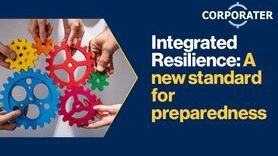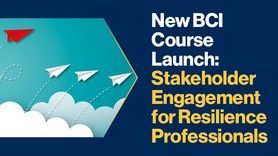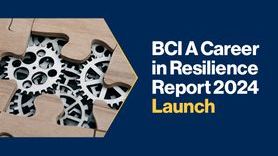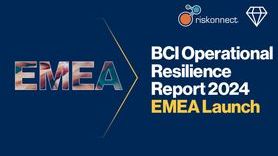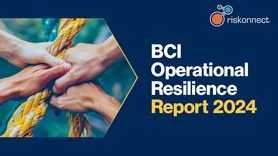Latest BCI report reveals escalating supply chain disruptions drive increased tier mapping and insurance uptake

The BCI is pleased to launch the Supply Chain Resilience Report 2024, sponsored by Zurich Resilience Solutions. This report examines the past year’s level of disruption within global supply chain practices and procedures, and professionals’ primary concerns for supply chains over the next five years.
This year’s research has found that almost 80% of organizations’ supply chains were disrupted over the past twelve months, with most experiencing between one and ten disruptions. This is an increase on the previous year’s disruption levels and that, despite the good practices many organizations are now following, more needs to be done to ensure supply chains are more resilient to shocks.
More tier mapping than ever before
Previous reports have highlighted the need to go deeper into supplier tiers in order to counter the root cause of disruption, and it appears this is an area which has seen significant improvement this year: 17.1% of respondents now analyse their critical suppliers down to tier 4 and beyond. This is a significant rise from 3.7% in the 2023 report indicating more comprehensive tier mapping in order to fully understand supply lines and the risks that disruptions pose.
Third party failures are the most frequent reason for disruption
Despite the greater due diligence of supplier tiers, 43.6% of organizations experienced supply chain disruption due to third party failures. The second-rated cause of disruption was cyber-attacks, with adverse weather and natural disaster events taking third place. Most organizations identified their main cause of disruption as being in the first two tiers of their supply chains.
Increases in reporting and technology usage
Supply chain reporting and the use of technology have increased this year, with a shift towards enterprise-wide supply chain performance reports replacing specific function reporting. Mirroring this is a substantial increase in the popularity of technology to record supply chain disruptions. Despite the advances in technology to assist with supply chain management, Excel spreadsheets top the preferred tools list, followed by incident response data, and BCM software.
Rises in the uptake of insurance cover, with almost half of organizations now insured against major supply chain disruptions
This year’s research shows that organizations are increasingly aware of the financial cost of supply chain disruptions with more organizations recording the costs. In parallel to this increase in recording, there is also a rise in the uptake of insurance. Although a layered approach to supply chain resilience that incorporates plans is important, the past year saw a rise in respondents using insurance to cover the cost of major disruptions, which rose from 37.4% in 2023 to 46.7% over the past twelve months.
A worrying drop in top management commitment
Despite a welcome rise in the adoption of supply chain business continuity plans and supply chain mapping, this year’s report notes a substantial decrease in top management commitment to managing supply chain risks: 20% of respondents now report low or non-existent commitment. Reasons cited for this alarming drop are economic challenges and competing budget priorities.
A look to the future
This year’s research shows that future supply chain risks are under scrutiny; an encouraging trend that highlights a growing awareness of supply chain resilience.
Cyber security, climate threats, and natural disasters remain prominent threats for the medium term. However, this year’s top supply chain risks also include civil unrest/conflicts, human and animal illnesses, industrial disputes, supply chain insolvency, product quality, environmental incidents, and new laws and regulations. All these issues were flagged as the greatest concerns for practitioners over the coming five years.
Rachael Elliott, BCI Knowledge Strategist, commented:
“It is refreshing to see the step change in the number of organizations that are performing greater due diligence deep into their supply chains. It is also encouraging to see that organizations are now investing in a multi-layered approach to supply chain resilience by adopting more rigorous approaches to resilience in combination with increased uptake of supply chain insurance. However, with a fifth of organizations still claiming that management lack commitment to supply chain resilience and disruptions increasing in both number and diversity, it is clear that we are still far from a universally adopted “good practice” approach to ensuring supply chains are resistant to shocks.”
Björn Hartong, Global Head of Supply Chain and Marine Solutions, Zurich Resilience Solutions, commented:
“The list of interconnected risks for business leaders and supply chain managers to tackle appears to be multiplying. Cyber and climate-related risks are yet again at the fore, but they are joined by new entrants owing to the current global geopolitical environment. And whilst these risks pose very real business challenges, they also present opportunity to those that take a holistic approach to risk management, business continuity and building long-term resilience.”
About Zurich Resilience Solutions:
Zurich Resilience Solutions, the risk advisory business of Zurich Insurance Group, leverages 150 years of industry experience and 75 years of risk engineering expertise to address the risk management needs of both existing and new customers. The unit offers specialized insights, tools, and solutions to help businesses tackle traditional and evolving risks, such as climate change and cybersecurity.
As a global entity, Zurich Resilience Solutions has over 950 risk experts stationed in 40 countries, bringing local expertise and industry specializations to clients worldwide. Its capabilities and solutions are available to any organization seeking a proactive approach to risk management and long-term resilience.









